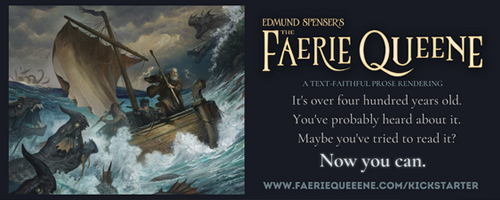Flood Legends Rise from the Depths of History
You may know the biblical account of a worldwide flood in Genesis 6–9.
But did you know that many cultures have their own tales of a catastrophic flood in the ancient past?
I create storylines and content for the Ark Encounter theme park from Answers in Genesis. In my research, I read over 200 flood legends. I found remarkable similarities between these ancient stories and the Genesis flood account.
Nearly all these legends include details about God or the gods being upset with humanity for some reason. But one upright man is given the task of building a vessel that would protect him, his family, and an array of animals from the deluge. Several tales include details about a rainbow and animals being sent out to check if the land is dry enough.
Skeptics have suggested the biblical author simply borrowed from an earlier story of a large flood in the ancient Near East. But this claim fails to account for the vast number of flood legends from around the globe.
These accounts don’t just share details. They share enough differences to show that they are not merely the result of one culture copying another, or one people’s revised version of an early missionary’s account of the Genesis flood.
Unlike other legends, the biblical account, inspired by God, also describes the only vessel that could keep passengers safe during a world-destroying flood. Also, the vessel of many other flood stories lands on the highest hill or mountain in their own neighborhood. But the Bible does not “localize” the story—the biblical Ark lands on a mountain in a region quite far from the location of the biblical writer.
How do we explain this global flood of flood legends?
Well, the most logical conclusion is that in ancient times, a massive catastrophic flood impacted all humanity. Then, as people began to populate the earth again, the story of the global flood passed down generation after generation. Over centuries, details became embellished or lost. But certain core elements remained.
Today, new kinds of flood legends captivate the minds of Christian fiction readers. That’s because the early chapters of Genesis have served as a sort of Christian “Middle-earth” for fantasy buffs. This era gives authors the chance to create a world full of incredible creatures, terrifying giants, and millennium-long lifespans.
Some authors shift their imaginations into overdrive. After all, they have little need to justify their creations since the great flood eventually obliterates their world, leaving no traces for us today.
Some authors send modern characters back in time to this world. This method lets readers focus attention on the world’s mysteries and strangeness. I do this in my own youth fiction series, The Truth Chronicles. Four young teens travel to the pre-flood world to see if ancient history supports the biblical or evolutionary worldview. Sam Batterman’s Wayback novel and the third novel of Keith Robinson’s Origins Trilogy also use time travel to investigate the antediluvian world.
However, more authors choose to create adventures built around real or imaginary characters from that time. For obvious reasons, Noah is the most common hero. My Remnant Trilogy spins a coming-of-age tale as Noah grows in his faith while his world races toward destruction.
This series is more accurately classified as historical fiction. However, others have taken the concept into the fantasy realm. For example, Douglas Hirt’s Cradleland Chronicles trilogy opens a little earlier in history, with Noah’s very pregnant mother being pursued by Nephilim and other evil forces. R. M. Huffman’s Antediluvian Legacy series follows righteous Noah’s heartbreaking adventure through a spectacular yet decadent world.
Both series feature Frank Peretti–esque glimpses beyond the veil into the spiritual realm, where evil spirits scheme against their Creator and twist humanity for their own purposes. Yes, these books are fantasy, but these authors clearly desired to maintain a healthy respect toward Scripture.
Other series interact more loosely with the biblical flood account. These include Vaughn Heppner’s Lost Civilizations series, which immerses readers into a full-fledged fantasy set before the flood. Similarly, two of Brian Godawa’s Nephilim Chronicles books place a strong emphasis on certain details found among ancient Near Eastern cultures.
While Heppner’s series barely interacts with the biblical text, using it primarily for worldbuilding, Godawa’s novels occasionally contradict Scripture. Furthermore, his reliance upon ancient Near Eastern beliefs often add interesting background to biblical details, but they also lead to bizarre and impossible circumstances.
This popularity of pre-flood fantasy fiction creates interesting parallels to the hundreds of flood legends from around the globe.
In flood accounts, the cultures closest to the Middle East, with legends written early, come closer to the Bible’s historically accurate account. However, the peoples who moved far from Ark’s landing spot, whose legends were not written for millennia, often contain the weirdest elements while maintaining some truth.
Likewise, in modern flood fiction, authors who want to follow Scripture craft believable tales full of insights into the times and characters. However, authors whose stories rarely interact with the Bible, or depend on extra-biblical data, create tales that contain some truth but also strange and implausible elements.
Whenever we enjoy biblically based fiction, we still face the risk of confusing imagination with truth. Christian readers of flood fiction should examine all stories in the light of Scripture to maintain the distinction between fact and fiction.


































